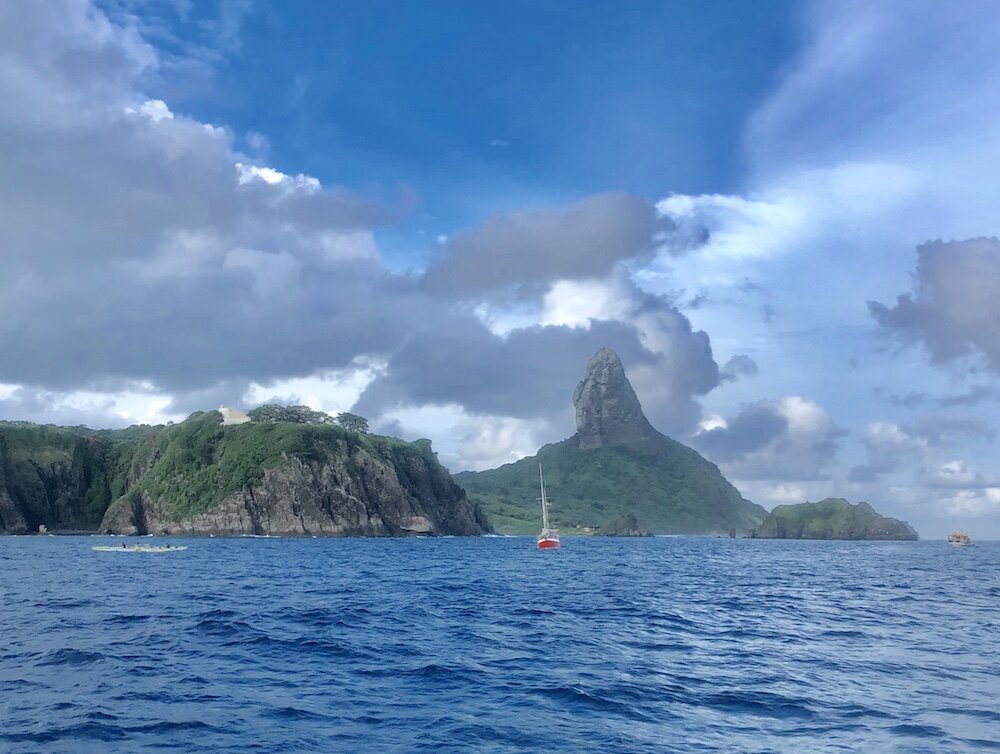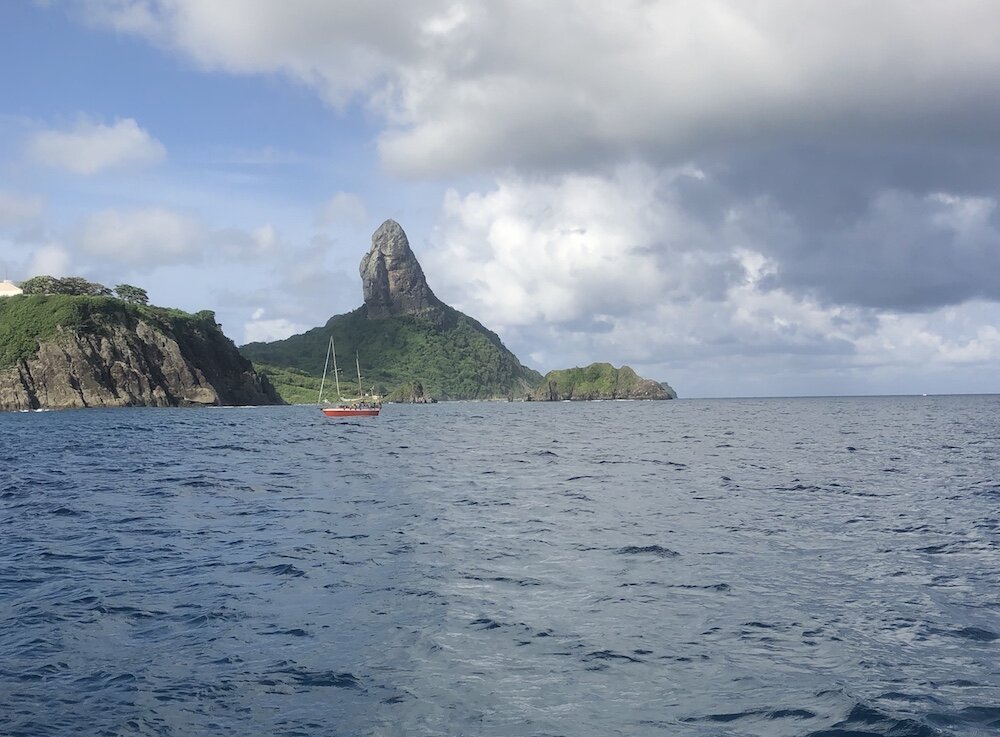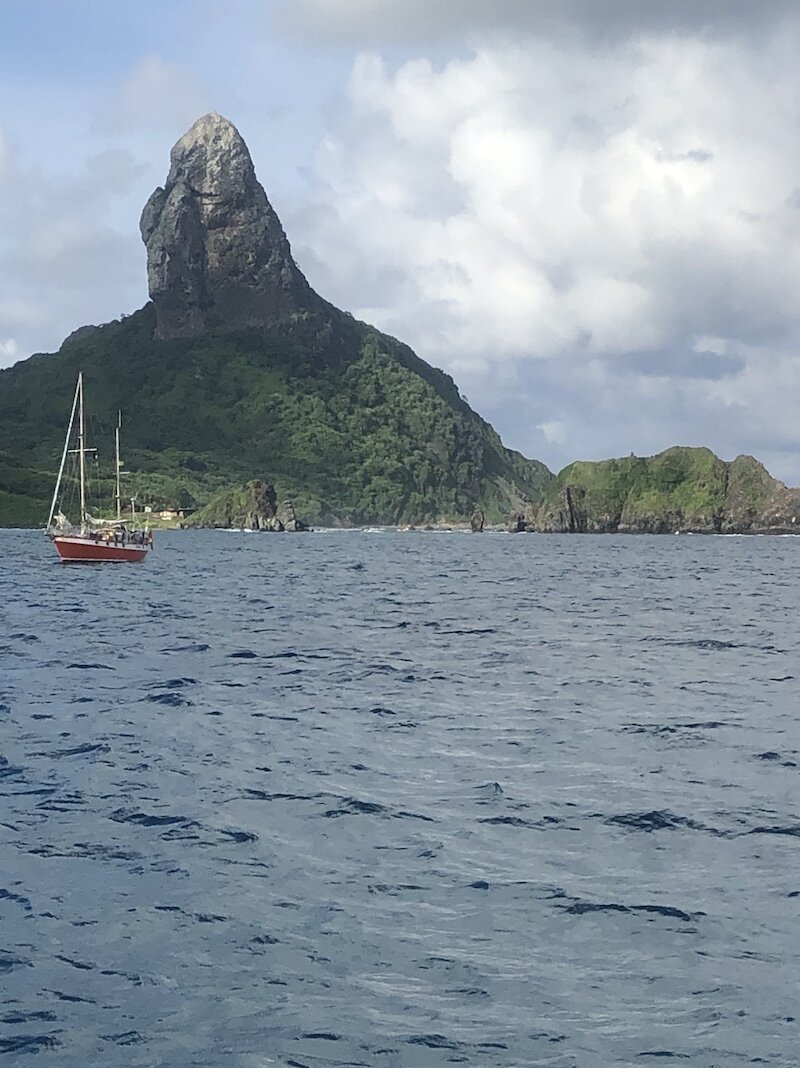5 Best Remote Beaches in Eastern Brazil
/Brazil is full of fantastic beaches, and if you travel off the beaten path you will find some of the most gorgeous, remote beaches in eastern Brazil. These are just a few that are perfect day trips for sailors spending time in Marina Jacaré in the popular port of Cabedelo, Brazil after sailing across the Atlantic Ocean.
By Michelle Segrest, Navigate Travel Adventures
Unique, off-the-beaten-path day trips are not difficult to find, even from the very remote sailing port of Marina Jacaré in Cabedelo, Brazil. This is a popular port for sailors crossing the Atlantic Ocean, and the first stop is one of the most gorgeous islands on the planet.
While many sailors prefer to take longer trips to Rio de Janeiro, we wanted to explore the more remote local beaches off the beaten tourist path. We also wanted to see beaches that had a variety of character from the wild, deserted beaches to the popular local spots to more touristy treasures. All of the beaches and hidden gems are dog friendly—as we wouldn’t go anywhere without our sailing beagles, Cap’n Jack and Scout.
Ihla Fernando de Noronha—Off the Eastern Brazilian Coast
After 15 straight days sailing across the Atlantic Ocean from Mindelo, Sāo Vicente, Cape Verde, Africa to Cabedelo, Brazil, South America, we took a pit stop at the remote island of Ihla Fernando de Noronha.
We dropped the anchor in an open bay surrounded by plush rainforest mountains that reminded us of Jurassic Park. This hidden gem is a national park—an archipelago of 21 islands and islets in the Altantic Ocean about 250 nautical miles from the eastern coast of mainland Brazil.
After about a week of blistering heat while sailing the doldrums on the Equatorial line and into the waters of the Southern Hemisphere, we welcomed the overcast weather and even the rain that began to fall and cool things off a bit.
Then the sun came out and we could truly appreciate the beauty that surrounded us. In deep contrast to the brown and silver mountains of Cape Verde, these formations were covered with plush green vegetation. Hundreds of long-tailed birds hovered around the island. We think they may have been some species of parrot.
Dozens of dolphins jumped and played and leaped from the water to the delight of the sailors sitting in anchored ships, the tourists on charter boats, and the kayakers and paddle boarders that had populated the bay under the bright Brazilian sunshine. Huge sea turtles were swimming alongside our sailing vessel, Seefalke, and piquing the interest of our sailing dogs—Cap’n Jack and Scout—who probably wanted to go ashore, but also seemed content staying at home onboard.
We learned that the small island community will accept no more than 400 visitors per day.
The islands of Fernando de Noronha are administratively unique in Brazil—forming a state district that is not part of any municipality and is administered by the government of the state of Pernambuco (despite being closer to the state of Rio Grande do Norte. The state district's jurisdiction also includes the very remote Saint Peter and Saint Paul Archipelago, located 625 kilometres (388 mi) northeast of Fernando de Noronha. Seventy percent of the islands' area was established in 1988 as a national maritime park.
In 2001, UNESCO designated it as a World Heritage Site because of the importance of its environment.
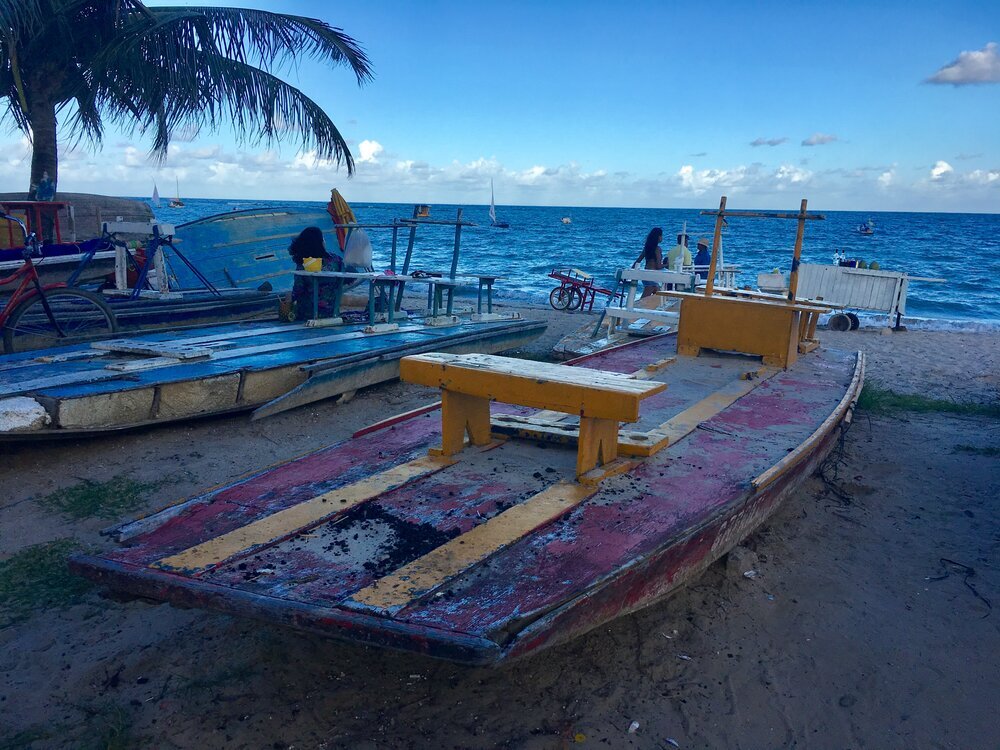
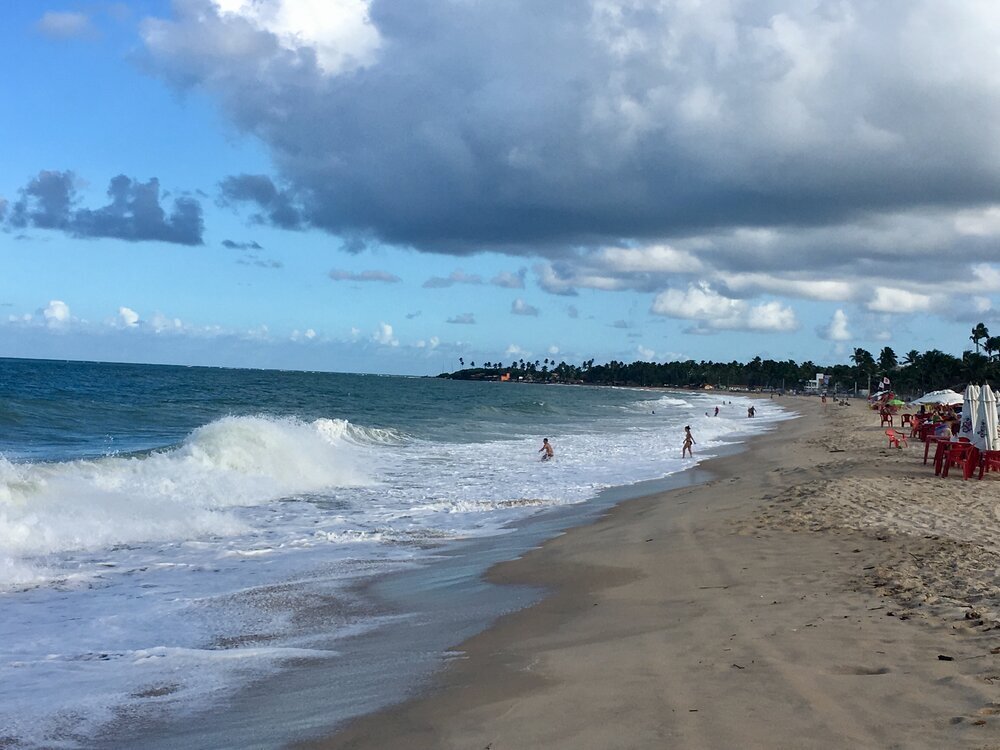
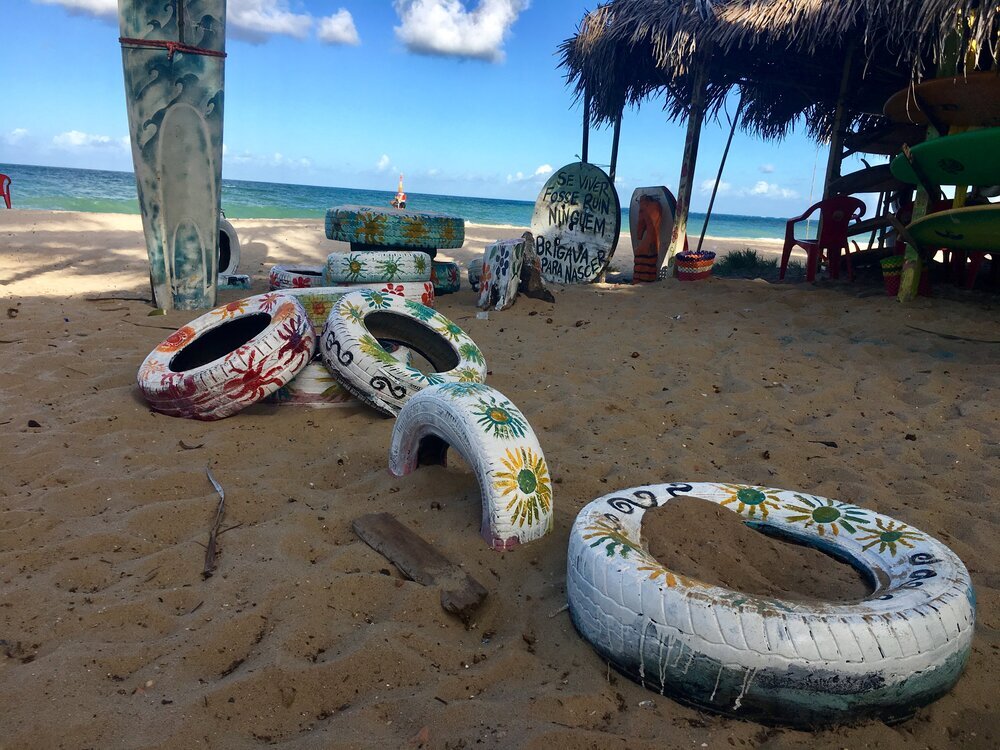

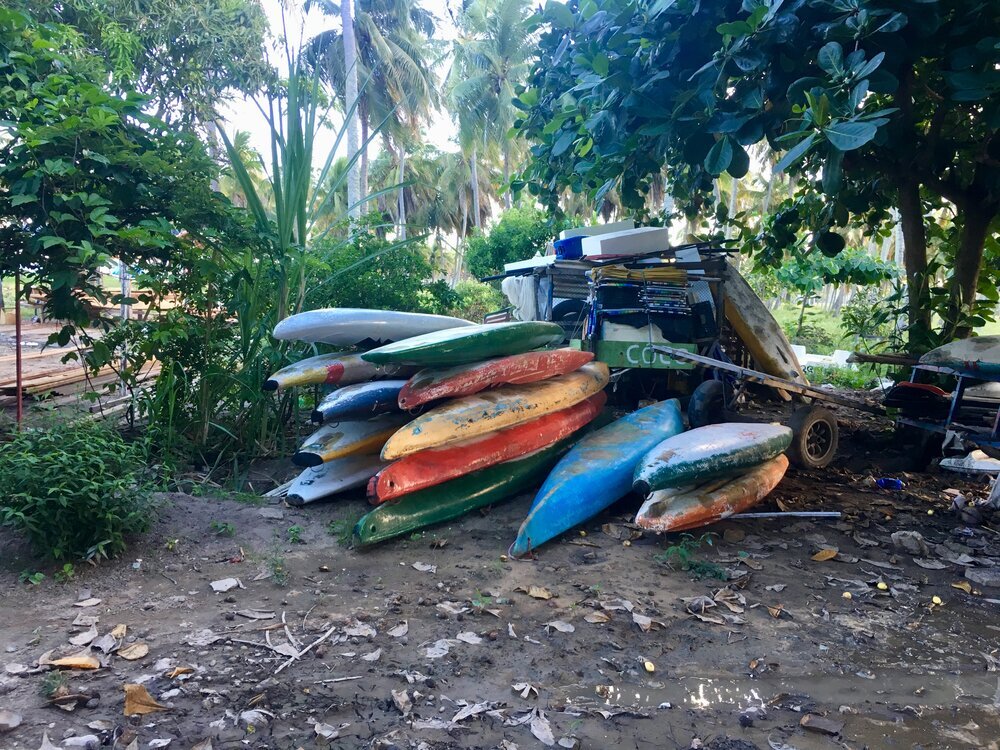
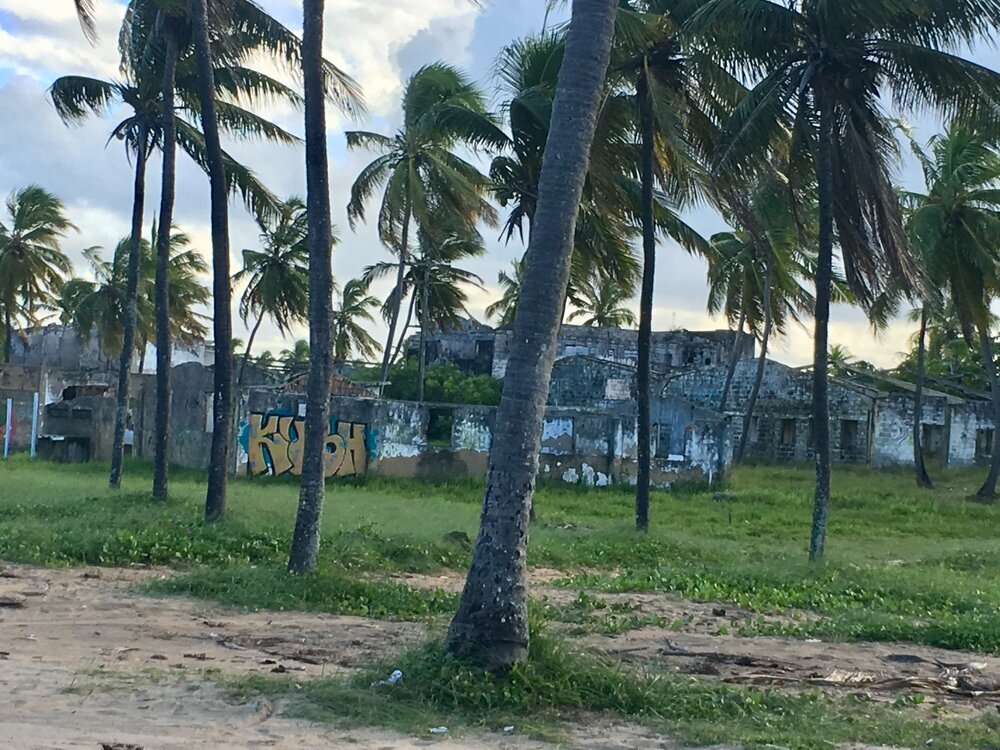
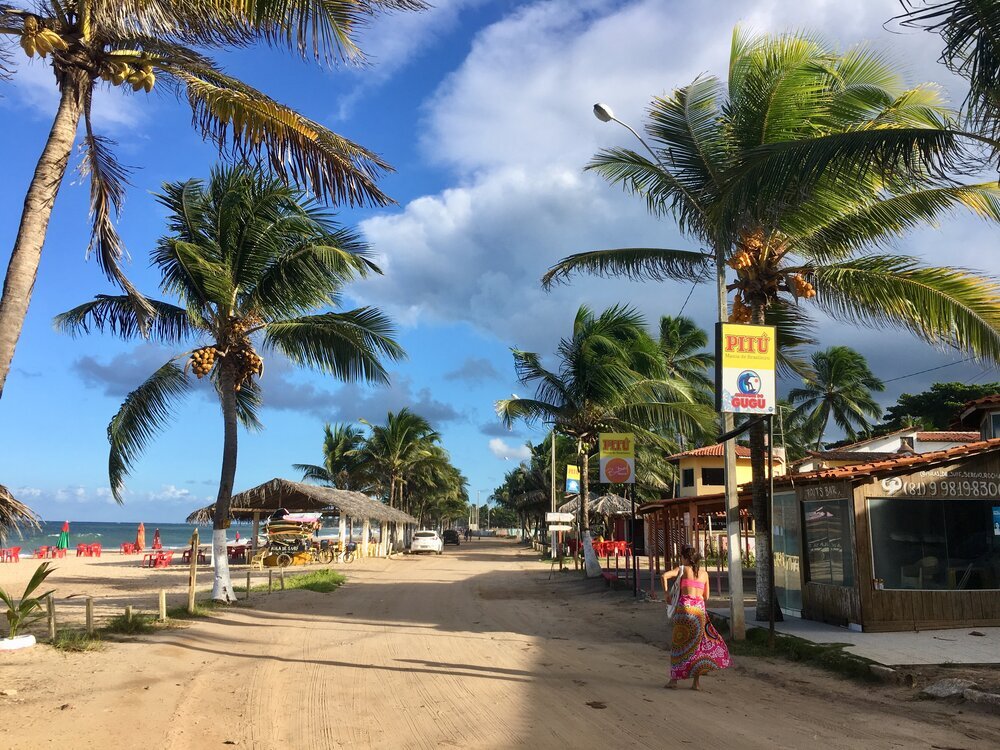
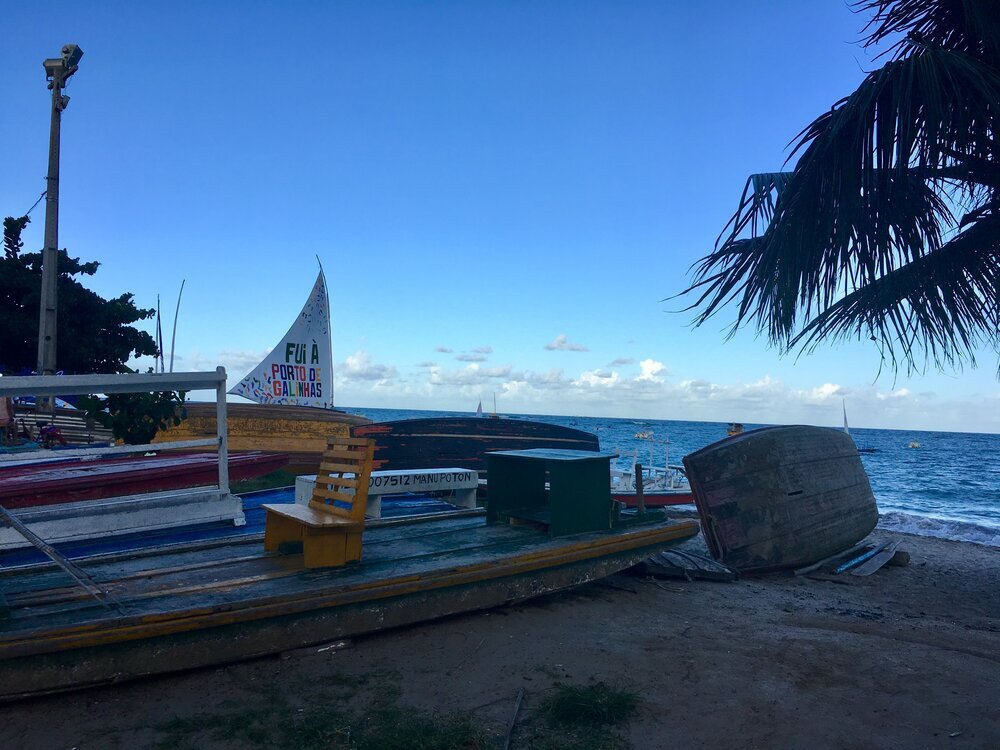
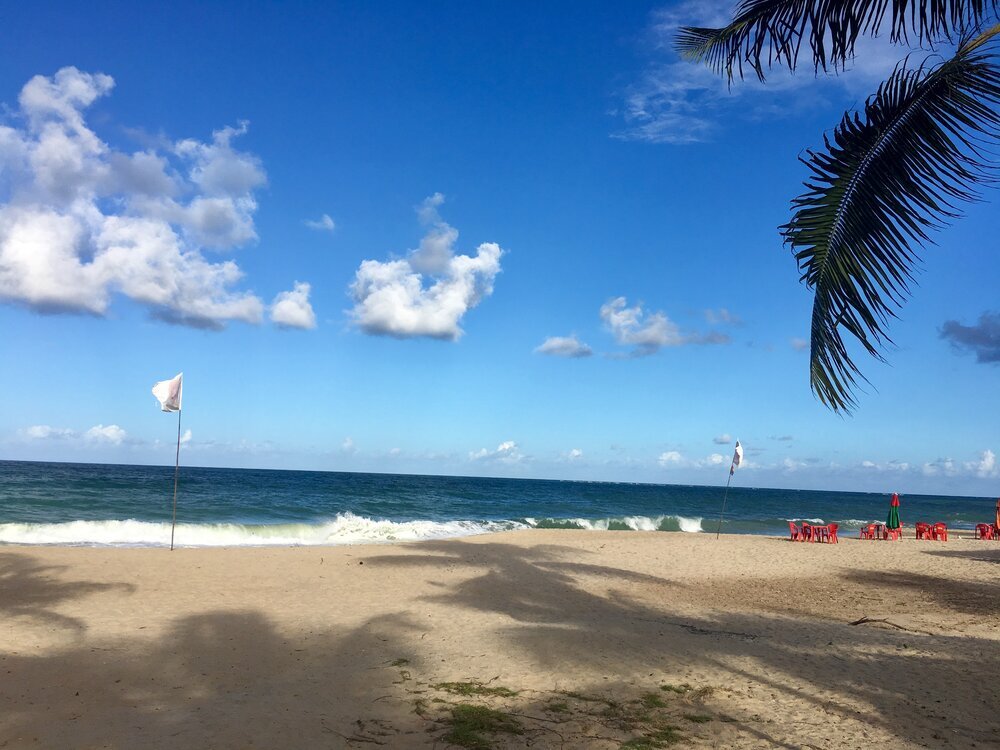
Praia de Maracaipe (Porto de Galinhas)—Open-Air Dune Buggies & Coconut Tree Climbers
Porto de Galinhas is located south of Recife in Pernambuco. There is a lot of fun stuff to do like beach buggies, wind surfing, or horseback riding but it is not as crowded as some of the other tourist beaches.
From Marina Jacaré it is about a two-hour drive to Praia de Maracaipe, a beach inserted in the Municipality of Ipojuca, Pernambuco, located about 75 km from Recife.
With its sprawling fields of coconut trees on one side and a gorgeous ocean with gigantic waves on the other, it’s a local hangout that looks like French Polynesia.
"Maraca", as the regulars call it, is the backyard of the Sufis who reside in Ipojuca and in Recife, especially after the shark attacks that occurred in the capital and in Vancouver.
The beaches situated south of the port of Suape (PE) are more prone to surfing, for not allowing the passage of sharks and for being environmentally more balanced.
Open-air dune buggies are rented for transport along the sand-filled roadways along the beach.
At any time, you will see a local casually climbing a coconut tree as easily as a monkey to retrieve the refreshing green coconuts that locals sell to tourists for only 2 Real each (about 50 cents in USD). With a sharp machete, the local peddlers slice open the top and pop in a straw. Tourists drink the water/milk directly from the coconut. Delicious!
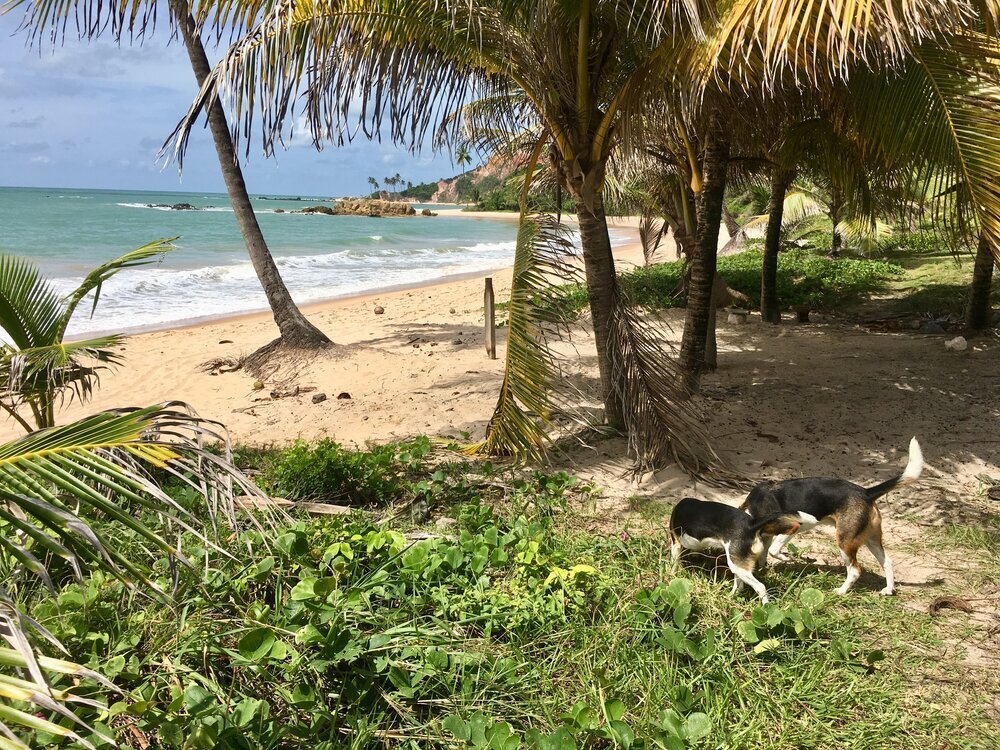
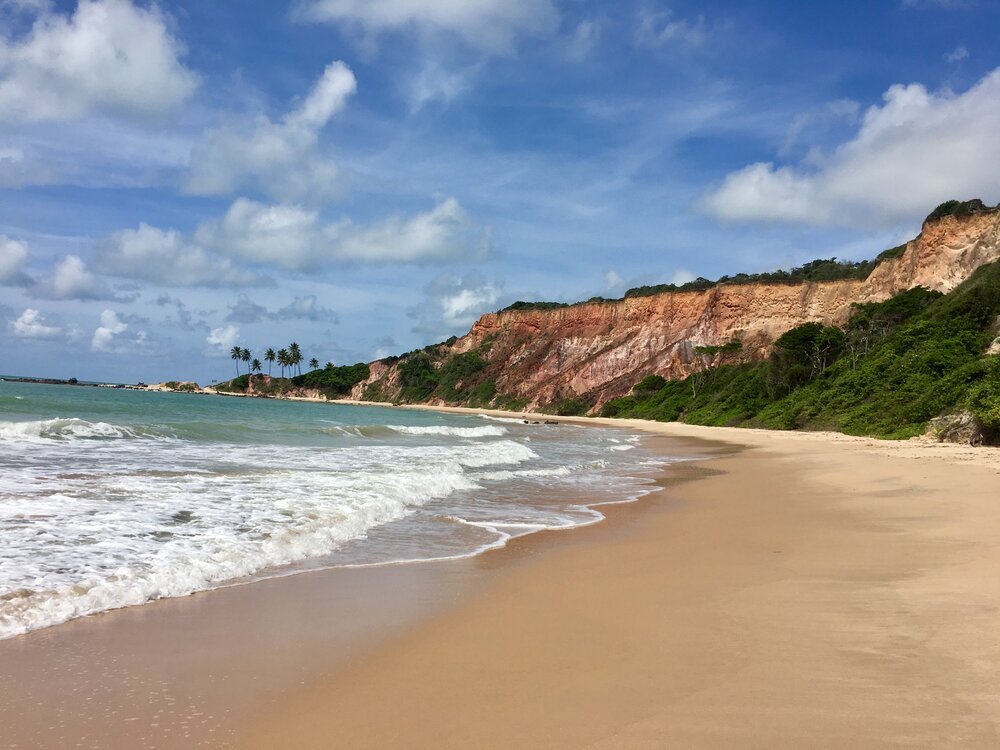
Tabatinga Beach—Remote Paradise
Tabatinga Beach is possibly the most beautiful beach I’ve ever seen. There is no tourist infrastructure, but the scenery is remarkable.
We unleashed the hounds and let them run and play for hours while we walked and explored the multi-colored mountains and exquisite tropical nature surrounding the beach that had hardly any people on it. It was the absolute opposite of touristy—wild and spectacular!
The warm, calm waters are perfect for bathing or swimming, while the mountain cliffs offer hiking opportunities with the rewards of spectacular views. From the top of the cliffs you can see the southern coastline. When the tide is high, this becomes a dolphin observation outlook point. Paragliding is popular due to the strong winds on the edge of the sea.
Tabatinga Beach is bordered by reefs which create natural pools when the tide is out. Even with its open waters, the reefs make the beach perfect for families with kids and safe for swimming and bathing.
From the top of the Mirante dos Golfinhos, you will see dolphins when they come in late in the afternoon to feed near the coast and interact with visitors.
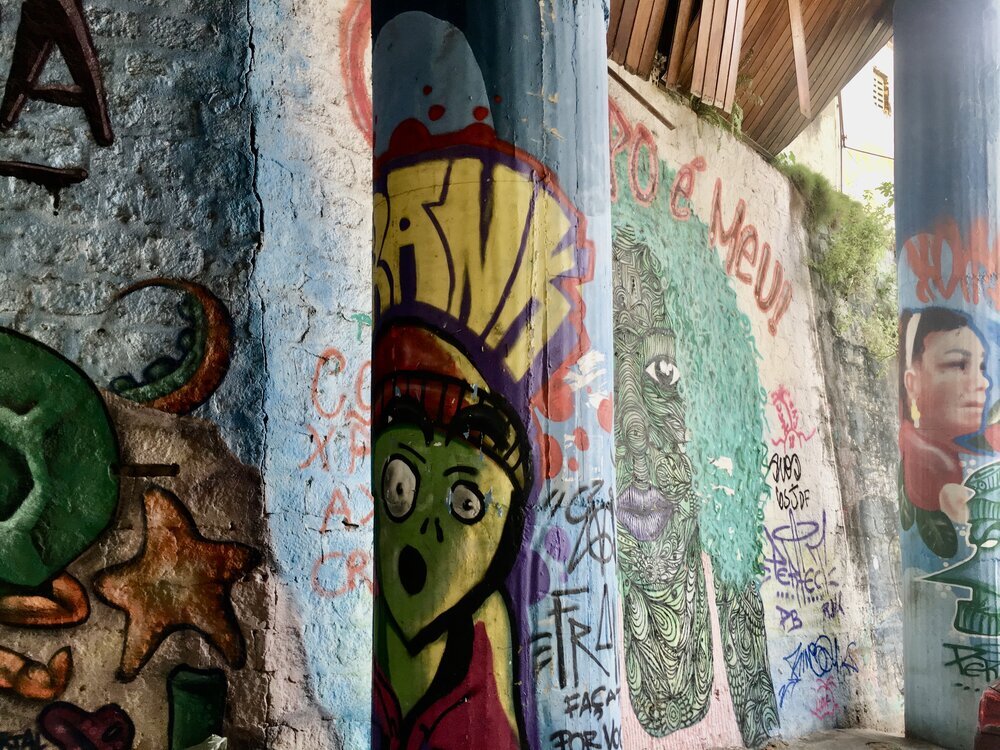
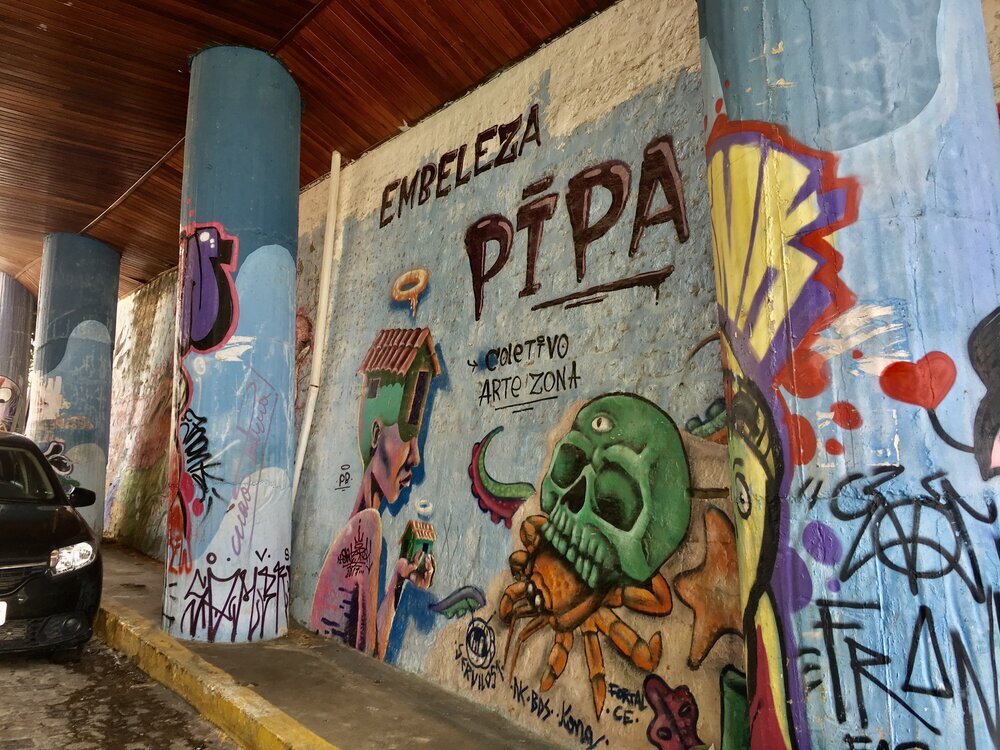
Praia de Pipa—Artists & Tourists
Praia de Pipa is the opposite of Tabatinga. It is incredibly touristy until you walk past some of the major rock formations that look like lava fields. With all the graffiti and art galleries, we could easily see this is where the local artists peddle their talents.
Pipa is magical if you don’t mind large crowds. The pristine beaches are backed by tall cliffs, dreamy lagoons, good surfing, and endless pousadas, hostels, global restaurants, and good nightlife. The waters are filled with dolphins and sea turtles.
Surfers discovered the small, roadless fishing village in the 1970s. Today, Pipa rivals Jericoacoara (Ceará) as the Northeast’s hippest beach town, and attracts partygoers from Natal, João Pessoa, Recife, and beyond at holidays and weekends. International travelers visit Pipa regularly. Its laid-back, ecological and independent-traveler
Pipa has a very cool, calm, relaxed vibe and is probably too small for that to change, despite the van loads of day trippers from Natal. This was the only place we visited where some English was spoken.
Tambau Beach (João Pessoa)—Tourist Delight & Evening Strolls
Tambau Beach is a popular, palm-fringed city beach featuring bars, eateries, and craft vendors. This is the place to go at night as the area comes alive with music, food, and the cool breeze off the water. If you want to be in the city center and still enjoy the beach, this is the place to go.
There are plenty of water activities, boat trips, available and a beautiful view. It is perfect for a morning or an evening walk along the boardwalk with a variety of restaurants, entertainment, and security. It’s a typical urban beach—very crowded on the weekends.
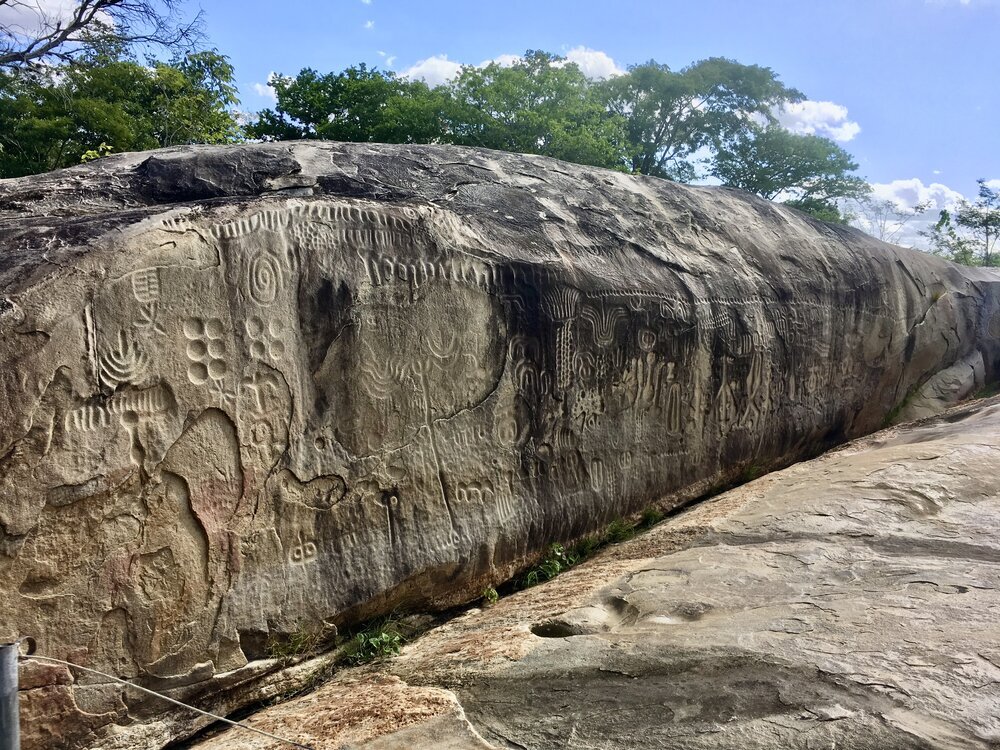
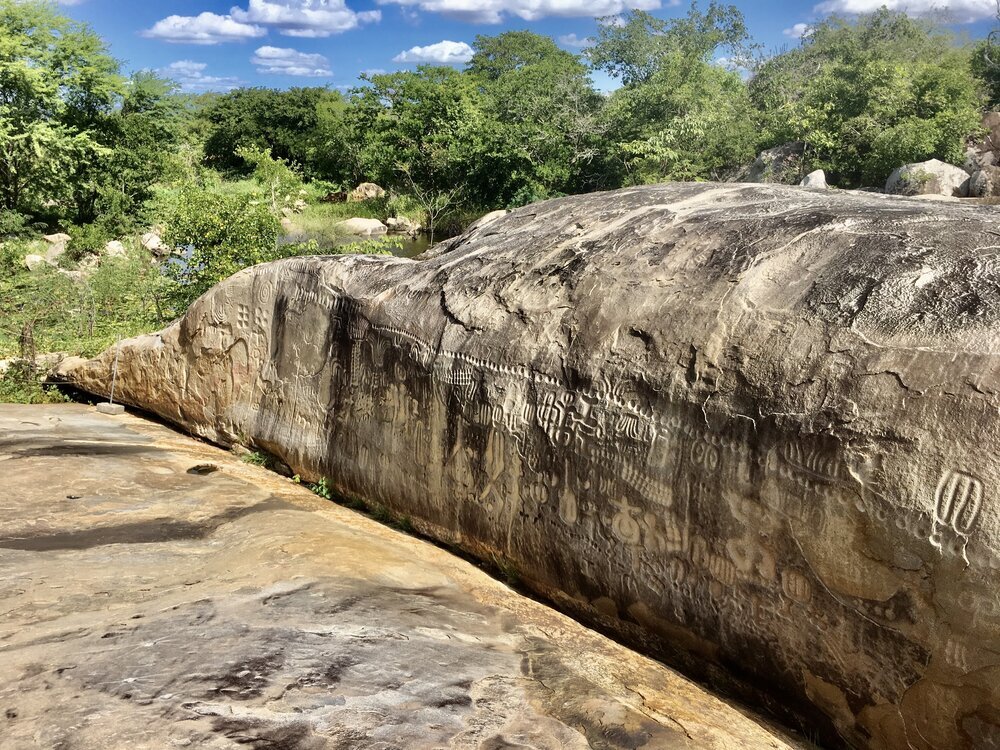
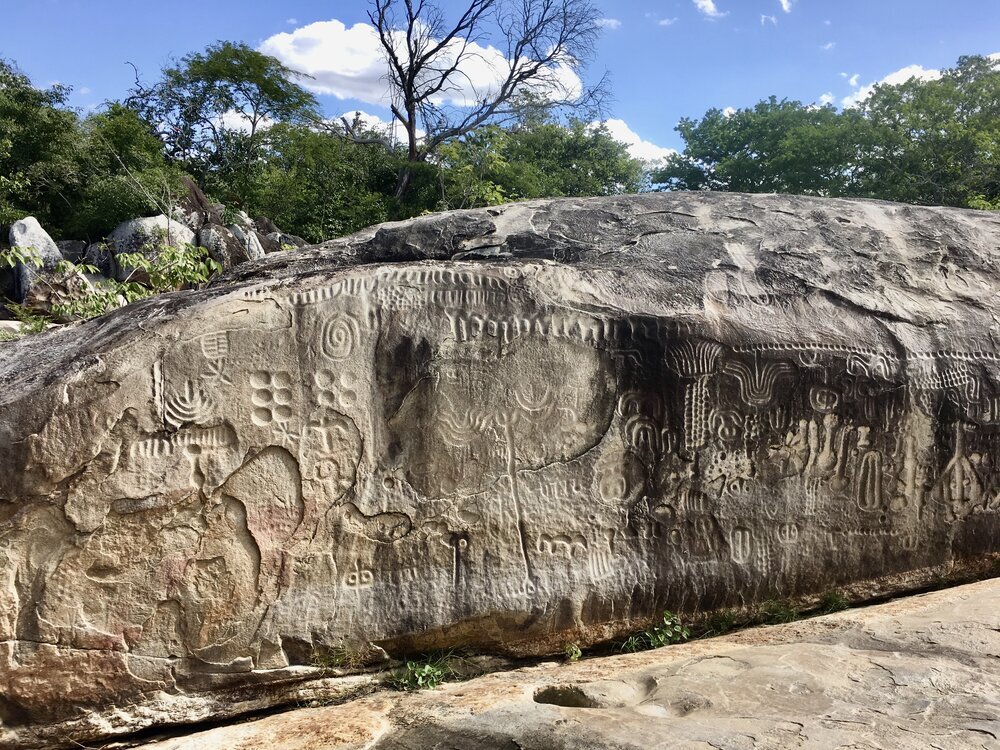

2 Quick Day Trips from Cabedelo, Brazil
Ingá Stone
If you need a beach break, rent a car and drive inland to the ancient Ingá Stone. This rock with ancient inscriptions believed to be more than 6,000 years old.
Take a two-hour drive from Marina Jacaré to see the famous Ingá Stone. Off the beaten path, the Ingá Stone (Pedra do Ingá in Portuguese) is located in the middle of the Ingá River near the small city of Ingá, 96 km from Joāo Passoa, in Paraiba State in the northeast of Brazil.
The Ingá Stone is also called Itacoatiara do Ingá. It is a rock formation in gneiss which covers an area of approximately 250 m² with entries whose meanings are unknown. Several figures are carved in low relief, suggesting the representation of animals, fruits, and constellations like Orion and Milky Way.
It is composed of some basalt stones covered with symbols and glyphs which are undeciphered until now. Scholars think it was created min. 6,000 years ago by natives that lived in the area until the 18th century.
2. Valley of Dinosaurs (Vale dos Dinossauros)—Sousa, Brazil
This is one of the few places in the world where visitors can walk alongside fossilized tracks from 80 different dinosaur species. This natural monument in Northeastern Brazil allows you to walk alongside dinosaur footprints in different shapes and sizes and life-size replicas of the jurassic creatures will take you back in time over 100 million years ago.
The walkways allow visitors to see nearly 50 fossilized footprints of the carnivorous Noasauridae and 53 tracks of the herbivore Iguanodon, among many others.
The impressive tracks are found within a 270-square-mile preserved ecological area. The damp earth from rivers and ponds hardened over periods of drought, gained new layers of clay and fossilized these footprints for posteriority, making this area one of the most important places for dinosaur lovers throughout the world.
If you want to find out more about who these Brazilian jurassic creatures were, what they ate, how fast they ran, if they hatched their eggs, or if they could fly, you can also visit the museum of the Valley of the Dinosaurs. There, investigators carry on unraveling mysteries and working so they can answer questions from curious visitors, filmmakers, and children.
The Valley of Dinosaurs is a hidden gem 500 km/350 mi inland from Joao Pessoa, near the town of Sousa in Paraiba State in Brazil. It is an area of 150 hectares/350 acres where a great number of dinosaur tracks and bones were found. Unfortunately, Brazil doesn't do a good job of promoting this unique location. If you are interested in archaeology and want to see a little more of the changing landscape of beautiful Paraiba, then the 6-hour drive from Joao Pessoa are well spent.





